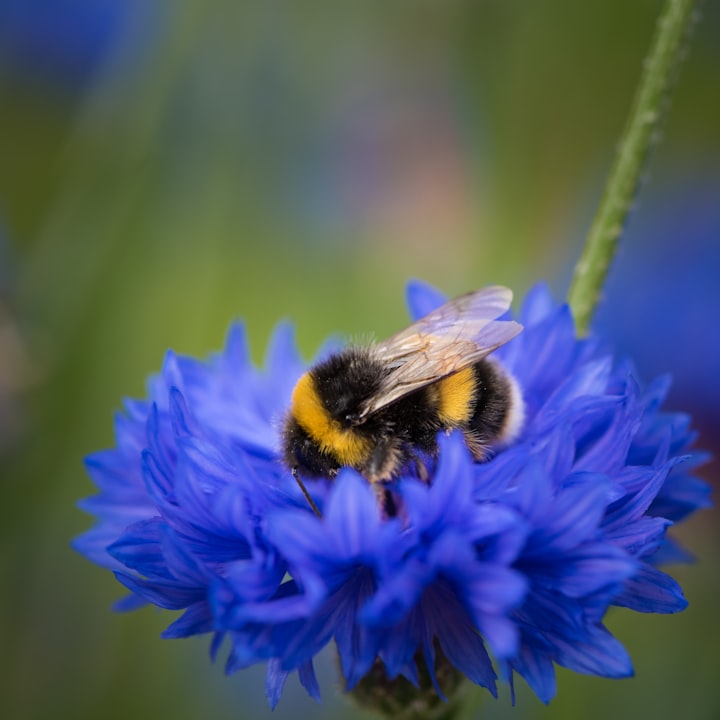Do you know how insects help your garden? Learn 5 steps to attract them
I know you always find some bug or beetle when you come to your garden, but which species can really bring benefits to your garden?

Insects are the most diverse and numerous organisms living on the earth.
Scientists from the Smithsonian Institution's Department of Entomology estimated that it is possible to have 30 million species of insects worldwide, with about we just named 1 million of these species.
It will be impossible to live in that world without them. Insects are responsible for our beautiful flowers and gorgeous fruits since they pollinate the plants. And without that work, we will not be able to grow lushing fruits and maintain crop productivity to feed approximately 8 billion people every day.
But when we go outside and see our garden we face a lot of insects, so...
Which insects are "good" for our plants?
According to the college of Agriculture from the University of Missouri, introducing beneficial insects can be helpful to reduce the activity of certain species.
Beetles

Beetles are the largest group of insects and are needful in pest management because both adult and larval stages can be predators of pest species.
The Lady beetles or ladybugs, as represented in the image, have a variety of species with all kinds of colors. Even with the "beauty face", they are great predators at the insect level. Ground beetles, Rove beetles, and Soldier beetles are other groups of beetles that can protect your plants.
Beetles can help control insect eggs, as grasshopper eggs, fly eggs, and rootworm larvae, until aphids, mites, and small caterpillars.
True Bugs

The adaptation of this group is that they can use their mouthparts to suck fluids from plants until other insects, killing the prey by piercing the body and extracting his fluids.
The "good" true bugs are Minute pirate bugs, Bigeyed bugs, Damsel bugs, Predatory stink bugs, Ambush bugs, and Assassin bugs. They control pests like Wasps, Flies, Leafhoppers, Corn Earworms, and pest bugs.
Flies
Here we have two important groups; the predatory flies and the parasitic flies. The predatory flies have many specializations to feed on their prey; sucking, piercing, chewing. It will all depend on how is their food source.
The Syrphid flies, also known as hover or flower flies, have interesting characteristics. The larval stage feeds on aphids, but adults use pollen and nectar from plants as food sources, serving as an important pollinator.
Other predatory flies are Robber flies, which feed on eggs and small larvae.
We have the Tachinid flies with a parasitic strategy, which are important in controlling caterpillars, beetles, sawflies, and squash bugs.
Lacewings
Green and Brown Lacewings are part of a soft-bodied group of insects. They are a voracious predator when in the larval stage feeds on small caterpillars, beetles, aphids, and whiteflies. On the adult stage, they prefer pollen and nectar but can consume small insects too.
Wasps

For Wasps, we have two categories; predators and parasitics.
Predatory wasps capture preys for their larvae. Some of these prey are; beetles, flies, true bugs, other wasps, and caterpillars. Capturing it, they are doing an essential control in these populations. These wasps are known as Hornets, Paper wasps, and Yellowjackets.
The parasitic wasps can attack pest species bigger than themselves. They have a peculiar strategy, they ovipositing in or on the host insect. When eggs hatch, the larvae feed on the host. These wasps are known as Braconid wasps, Ichneumon wasps, and Trichogramma wasps.
Now that we know who are the "good guys". It is crucial to know how to get them.
How Can I Attract Beneficial Insects?
Step 1. Increase the number of flowers you have in your garden. Beneficial insects usually feed on plant nectar.
Step 2. Maintain a regular source of water.
Step 3. Try to protect the blooming flowers from the wind.
Step 4. Diversify your plant species in height, colors, and blooming periods.
Step 5. Do not use pesticides. Many pesticides kill the "bad" insects and the "good" insects. If you need to use it, try to use some organic or homemade pesticide.
Yes. Insects are essential for a healthy garden.
They contribute to the balance of the environment, controlling pests, pollinating, and serving as food for birds which are seed dispersers.
Want to study more about insect benefits?
Here are the links from Smithsonian Institute and the University of Missouri works, which I used to get the references.
If you want more gardening tips, follow me on Twitter.
About the Creator
Kevin Fantinatti
I'm a biologist and a gardener, which studies sustainable agriculture and loves gardening. I am here to give you some gardening tips.
For more tips and tricks check out my Twitter: https://twitter.com/GreenGardenHelp






Comments
There are no comments for this story
Be the first to respond and start the conversation.